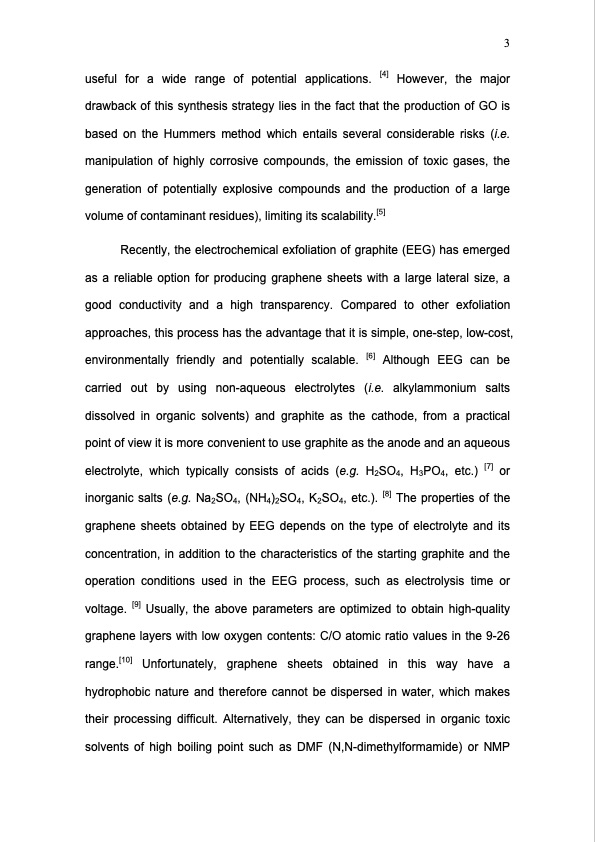
PDF Publication Title:
Text from PDF Page: 003
useful for a wide range of potential applications. [4] However, the major drawback of this synthesis strategy lies in the fact that the production of GO is based on the Hummers method which entails several considerable risks (i.e. manipulation of highly corrosive compounds, the emission of toxic gases, the generation of potentially explosive compounds and the production of a large volume of contaminant residues), limiting its scalability.[5] Recently, the electrochemical exfoliation of graphite (EEG) has emerged as a reliable option for producing graphene sheets with a large lateral size, a good conductivity and a high transparency. Compared to other exfoliation approaches, this process has the advantage that it is simple, one-step, low-cost, environmentally friendly and potentially scalable. [6] Although EEG can be carried out by using non-aqueous electrolytes (i.e. alkylammonium salts dissolved in organic solvents) and graphite as the cathode, from a practical point of view it is more convenient to use graphite as the anode and an aqueous electrolyte, which typically consists of acids (e.g. H2SO4, H3PO4, etc.) [7] or inorganic salts (e.g. Na2SO4, (NH4)2SO4, K2SO4, etc.). [8] The properties of the graphene sheets obtained by EEG depends on the type of electrolyte and its concentration, in addition to the characteristics of the starting graphite and the operation conditions used in the EEG process, such as electrolysis time or voltage. [9] Usually, the above parameters are optimized to obtain high-quality graphene layers with low oxygen contents: C/O atomic ratio values in the 9-26 range.[10] Unfortunately, graphene sheets obtained in this way have a hydrophobic nature and therefore cannot be dispersed in water, which makes their processing difficult. Alternatively, they can be dispersed in organic toxic solvents of high boiling point such as DMF (N,N-dimethylformamide) or NMP 3PDF Image | Graphene from Electrochemically Exfoliated Graphite

PDF Search Title:
Graphene from Electrochemically Exfoliated GraphiteOriginal File Name Searched:
80863368.pdfDIY PDF Search: Google It | Yahoo | Bing
Salgenx Redox Flow Battery Technology: Power up your energy storage game with Salgenx Salt Water Battery. With its advanced technology, the flow battery provides reliable, scalable, and sustainable energy storage for utility-scale projects. Upgrade to a Salgenx flow battery today and take control of your energy future.
| CONTACT TEL: 608-238-6001 Email: greg@infinityturbine.com | RSS | AMP |